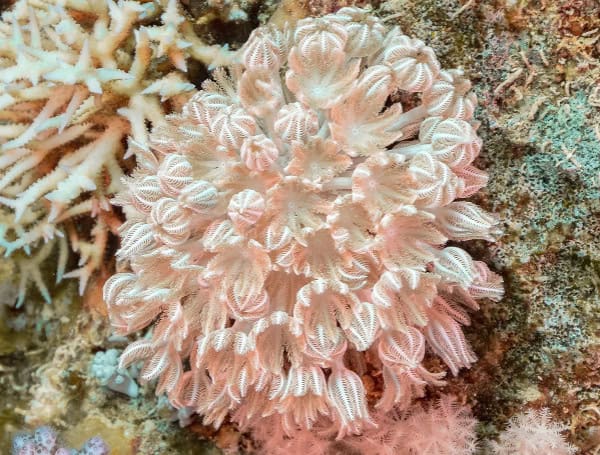
Scientists urge divers, recreational charters, residents and visitors exploring the waters of South Florida to look for an invasive soft coral species that has been reported on the nearby surrounding shores of Cuba.
The invasive pulse corals, a species within the Xeniidae family, are native to the Indo-Pacific and the Red seas. Several species of pulse corals have been discovered growing outside their native range into Hawaii, Venezuela, Cuba and Puerto Rico. Pulse corals reproduce rapidly, including asexually by fragmentation, and can overgrow coral reefs and seagrass meadows, with potentially devastating impacts.
The U.S. Geological Survey (USGS) has partnered with the University of Florida and other federal and state agencies to encourage people who believe they have spotted the invasive soft coral in Florida waters to report their sightings through the USGS Nonindigenous Aquatic Species website.
“Corals reefs and our seagrass beds are some of the most delicate habitats we have in our Florida ecosystem and, given the nature of these corals, these areas are most likely to be impacted,” said Paul Evans, research coordinator for UF/IFAS Invasion Science Research Institute (ISRI). “Ecologically, the pulse coral form large carpets of monocultures that suffocate and outcompete native species. This will change and shift whole marine habitats, making it critical for public input from those who are out and about this summer in the Florida reef tract.”
While there is currently no evidence of its presence in Florida waters, scientists want to determine if the species has reached South Florida before it impacts marine life and causes economic harm. The introduction of new invasive species would exacerbate the already deteriorating condition of U.S. coral reefs and hard-bottom habitats.
“We’d like SCUBA divers and snorkelers to keep a lookout for potential invasive pulse corals while out enjoying Florida’s Coral Reef and report any sighting,” said Shelly Krueger, Monroe County Florida Sea Grant Extension agent. “Underwater invasions are especially difficult to eradicate once a species takes hold as we have seen with invasive lionfish that are native to the same regions.”
Read: Understanding Coral Bleaching Threat: Causes And Impacts
Pulse corals are highly sought-after in the marine aquarium trade because of their attractive coloration and ability to thrive in various aquatic conditions. However, their invasive nature and ability to reproduce prolifically poses a significant threat to local environments.
“The health and integrity of Florida’s Coral reef is vital to our state. Not only does Florida’s Coral Reef protect southeast Florida from wind and waves generated by hurricanes, but our reef also generates 60,000 jobs and $2 billion in local income. We need all eyes underwater to be on the lookout for this invader,” adds Ana Zangroniz, Monroe County Florida Sea Grant Extension agent.
Seagrass meadows and mangrove systems, which serve as vital habitats for commercially and recreationally fished species, also could be colonized by invasive soft corals. Additionally, these ecosystems play a crucial role in shoreline protection and safeguarding upland properties from storms and erosion.
“Although much is still unknown, several agencies, universities and federal partners are engaged and actively working to raise awareness, perform necessary research and implement removal plans,” said Evans.
Read: UF-Led Research Gets Help From NFL Player, Air Force Veteran To Restock Sea Urchins On Coral Reef
Here is what scientists know about the species:
- Unlike the hard stony corals that build coral reefs, invasive species can outcompete and kill coral reef-building stony corals, sea grass meadows and mangrove systems as well as other organisms living on the ocean bottom.
- The competition can lead to a decrease in biodiversity and disrupt native coral reef ecosystems, which are critical habitats for numerous marine species.
- These soft corals could directly impact seven species of stony corals listed under the Endangered Species Act, seven of which are found on Florida reefs.
- The suspected causes of invasive coral outbreaks include intentional releases by marine aquarists, illegal aquaculture activities, attachment of coral fragments to boats, shops and fishing gear, and the incidental transport through ship ballast water.
Public engagement is critical at this stage to address issues and raise awareness of activities that promote the spread of soft corals through fishing, boating and marine aquarium dumping.
For more information, please visit https://invasionscience.ufl.edu/species-spotlight/
Help support the Tampa Free Press by making any small donation by clicking here.
Android Users, Click To Download The Tampa Free Press App And Never Miss A Story. Follow Us On Facebook and Twitter. Sign up for our free newsletter.
